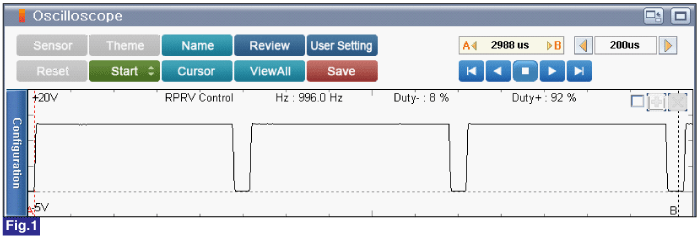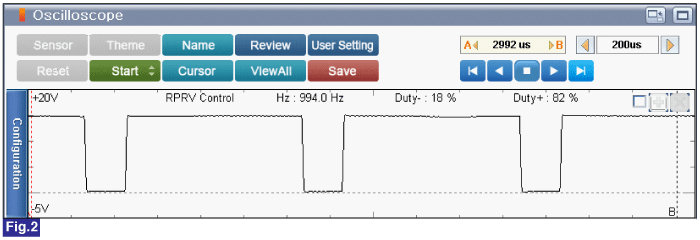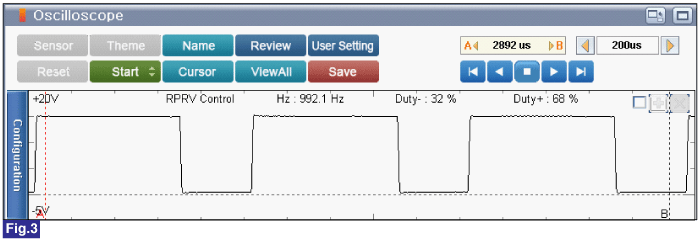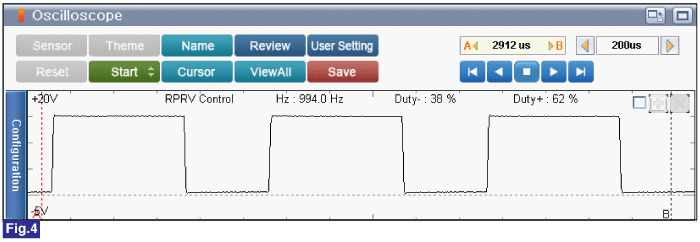Inspection condition : Ignition switch "ON" & Engine idle & Engine RPM approx. 2000RPM & W.O.T.
Specification :
Duty (-) when ignition switch "ON" : Approx. 8%
Duty (-) when engine idle : Approx. 18%
Duty (-) when engine RPM approx. 2000RPM : Approx. 32%
Duty (-) when Engine W.O.T. : Approx. 38%




Fig.1) Rail pressure regulator valve control duty when ignition switch is "ON"
※ Measured value can vary depending on condition of testing vehicle.
Fig.2) Rail pressure regulator valve control duty when engine idle
※ Measured value can vary depending on condition of testing vehicle.
Fig.3) Rail pressure regulator valve control duty when engine RPM is approx. 2000RPM
※ Measured value can vary depending on condition of testing vehicle.
Fig.4) Rail pressure regulator valve control duty when engine W.O.T.
※ Measured value can vary depending on condition of testing vehicle.


